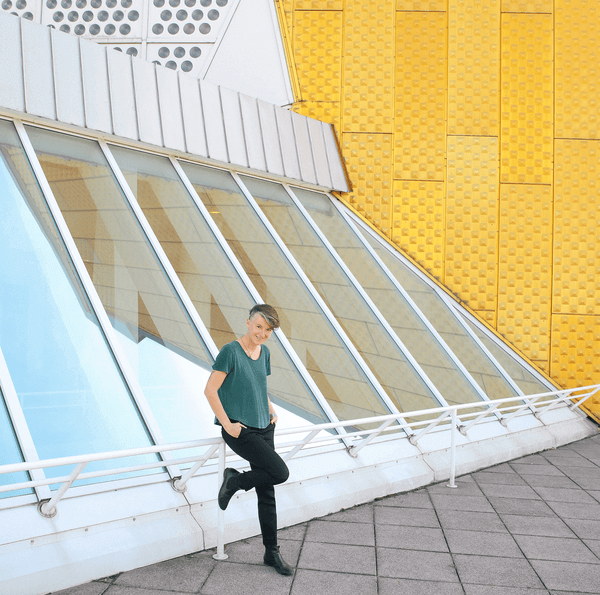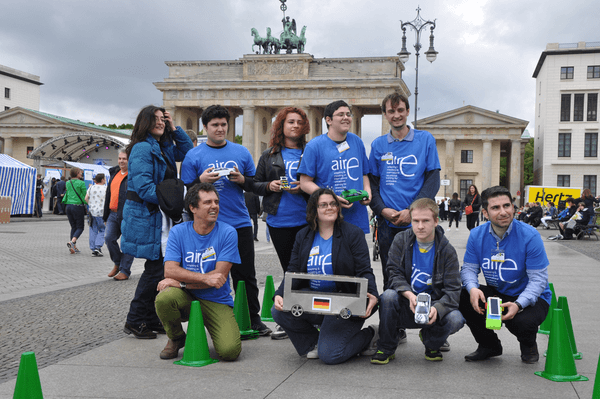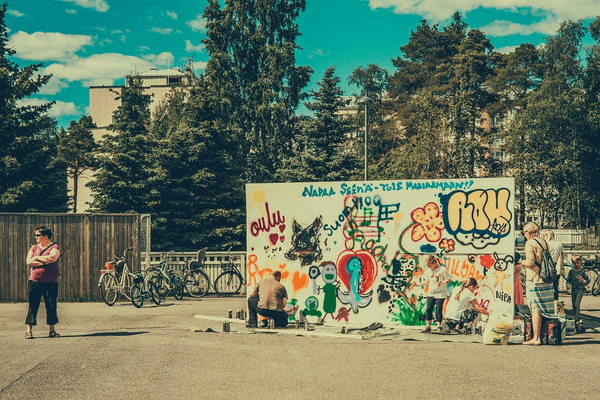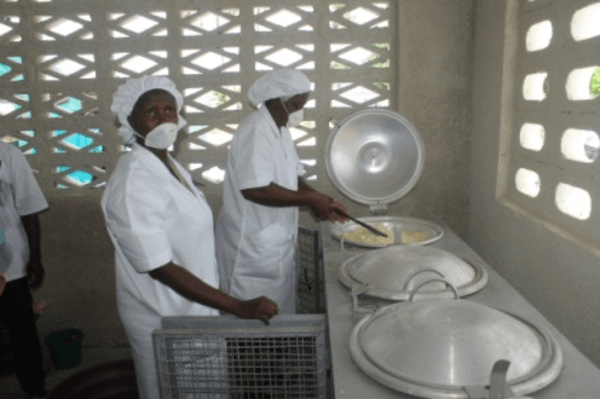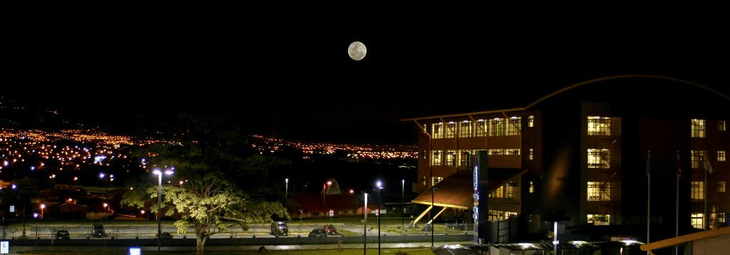
Participation for Neighborhood Improvement and Co-existence
Status
ongoingCity
Heredia
Main actors
Local Government, Regional Government, National Government, NGO / Philanthropy
Project area
Neighborhood or district
Duration
Ongoing since 2007
This project aims towards neighborhood improvement by combining upgrading of public space with capacity building.
The project in Guararí, a neighborhood of Heredia, improved the precarious neighborhood by upgrading public space and building capacity.
Central to the process was the Participatory Forum as an intermediate instance between community, Town Council of Heredia, and private actors. The forum was installed to define needs and find a common vision between different thematic fields. Projects and development strategies were formulated. The City's participatory budget was an important element for the success of the process. Furthermore, expertise and funding from the national government of Costa Rica and UN-Habitat supported project initiatives.
The different steps of improvement include refurbishing roads, sidewalks, and other public infrastructure. The plan foresees the creation of public spaces for community activities. A night school will give young residents over the age of 15 access to formal education. A permanent college is planned. Furthermore, the development of housing for 250 families has begun. Women and youth will have a special role in creating appropriation for new public spaces.
The project demonstrates the achievement of participative neighborhood upgrading under difficult social circumstances. Sustainable structures and cooperative decision making were established. In addition, community leaders are capacitated in project formulation and management ensuring a long term development.
Guararí is a community of 20,000 inhabitants (2010) with a high population of immigrants. It was characterized by informal squatter settlements and low-income housing developments. Formally surrounded by coffee plantations, Guararí has bad connections to bordering neighborhoods. The Río Pirro separates the area from the city center. Before the project’s implementation, streets and public infrastructure were in poor conditions and there were no public spaces for community activities. School-service was limited to primary school. Members of the community suffered from crime, stigmatization, and social exclusion. It was almost impossible for residents to find employment outside Guararí.
The Municipality of Heredia and the Communal Development Association, a private organization representing the needs of Guararí residents, promoted the project and aimed to improve local life conditions with a participative approach. A model of peaceful and healthy coexistence, social relations among residents, as well as the citizens' appropriation of their neighborhood were supported as overall objectives. In order to formulate subprojects and gain access to funding, it was necessary to generate capacity among community leaders and "gatekeepers".
Youth were especially effected by the bad conditions in Guararí. Hence, giving this particular target group access to formal education is a main objective of the efforts and will be carried out in two stages: the first one is a night school for young residents over the age of 15, which is presently already active. The other one is the construction of a professional college for students between 13 and 18. Furthermore, it is a goal to improve the community-safety-level by creating quality designed public spaces which communicate safety. Part of this is to improve streets and sidewalks. Another one is to build new centers and options for cultural activities. In conjunction with this was the fundamental importance of free land for these community-oriented facilities. In addition, the Municipality wants to make permanent programs for sports, cultural and artistic activities available - especially for young residents. A final major challenge of this interdisciplinary approach was to finance the different projects and combine the interests of various public and private funding actors with the needs of Guararí-residents.
In 2007, the Communal Development Association started to identify different actors in Guararí. It was of fundamental importance to be aware of the interests of groups who want to build houses, of residents willing to develop different kinds of public spaces, and of partisan interests of community leaders. Based on groups’ interests, priorities for the developing process could be fixed. The neighborhood was divided into 23 zones for actions and differentiated between formal and informal settlements.
As a major step, one of the project's core elements regarding the decision making-process was installed: the Participatory Forum. It gathers representatives of different neighborhood organizations, the Municipal Board, the District Board, the Cantonal Union of Development Associations, and the police force; experts of UN-Habitat Costa Rica were also gathered. As a first principle of the Participation Forum, guidelines and democratic ways were fixed. The organizational type needed for Guararí was discussed by recognizing each member’s standpoint and debating them in the negotiation processes. Based on these standpoints, a working agenda with the local government and public institutions was established. It defined that first a shared vision including the most significant problems and needs regarding citizens’ safety and neighborhood improvement of the development in Guararí had to be worked out in a participatory way. Based on these priorities, projects could be formulated and presented in order to be supported by the participatory budget or the ordinary administrative budgets of the Town Council. Simultaneously, a process of capacity building was started and members of the forum were trained in setting up projects to promote development. Training sessions for the leaders were organized in which professionals from different institutions explained the local regulations to access funding. Educational materials were provided to participants. Furthermore, UN-Habitat and the Department of Housing and Development installed learning courses regarding the improvement of neighborhoods for community representatives.
Between 2010 and 2011, projects were formulated by the forum. The process of approval had different steps: first the Development Association Assembly of Guararí, after this the District Council, and finally they were presented to the Municipal Council of Heredia. As a result, 11 of 12 presented projects were accepted to be funded by the Participatory Budget of the municipality.
Next projects were selected by which level they follow in the overall objectives. By April 2012, three projects were prioritized: a multifunctional-complex for cultural, sports and educational activities, a permanent project for education and recreation for the youth, and a process to gain public land for new community-oriented constructions.
The cultural and sports complex is a result of a participatory design process. It supports the community’s assemblage and coexistence. Youth are included in a social cartography analyzing the appropriation of public spaces and profiles of projects for 2012. Likewise, funds are negotiated in committees with representatives from the local and central governments and members of the local community.
The participative budget of the Municipality of Heredia was a main source in setting up the project. A common priority agenda between the community and the municipality made it possible to mobilize financial, technical, and administrative resources of the municipality. There are also negotiations with different institutions of the national government to financially support larger-scale projects. Recourses for the management of schools and teaching were provided by the Ministry of Public Education, while the Ministry of Security guaranteed permanent police personnel in Guararí.
The Participation Forum was supported with human and technical recourses through a letter of understanding between the municipality, the Ministry of Housing and Human Settlements, and UN-Habitat Costa Rica. Within the Joint Project for the Achievement of Millennium Objectives, UN-Habitat supports the Participation Forum in the activation and sustainable management of public spaces.
Since 2008, 370 housing units and 15 playgrounds were built. All public streets have been refurbished. A care center for 250 children was established and gives parents the chance to visit the night school. In 70 places the public spaces were improved, 3-5 hectares of land were bought for a technical college, and other projects of installing or renovating public infrastructure were carried out.
One main result of this process-oriented approach is that community representatives, technical personnel, and politicians are nearly equally involved in the design, presentation, and negotiation of projects. In the long term, representatives of the community are trained to become experts while ideally still being linked to the community, and being able to continue the process of capacity building. Likewise, the Participative Forum also established a vertical link between community, municipality, and national government including actors of the private sector.
On the municipal level, a Commission on Neighborhood had been installed, which ensures the long term success of the projects. As a consequence of the developments in Guararí, an Urban Pact will be signed by representatives of the community, the local government, national institutions as well as representatives of civil society and private sector. This agreement aims to channel human, technical and financial recourses for upcoming projects.
The first main challenge was the funding of the project and to find alternative combinations of recourses. Second, it resulted to be difficult to inspire Guararí inhabitants to cooperate in the participative process making it difficult to identify the main problems of different sectors. It was a challenge to convince people about the benefits of related measures on their life-styles. Once established, the Forum turned out to be a positive experience for participating citizens. Although it is worth mentioning, that the communication between the Participative Forum and the rest of community was partly difficult. Only a limited number of citizens took part in the assemblies and meaning it is not guaranteed that those who are not close to representatives are able take part in influencing the developments. As a result, a new communication project was designed, which is aimed to inform and consult local residents through alternative ways about the changes in Guararí.
The neighborhood program in Heredia emphasizes participatory planning and design regarding public spaces and socio-cultural activation to support community-appropriation and credibility of the efforts. This experience proves the necessity of finding the right mediators between residents and municipal or national governmental institutions. The results proved to be positive when community representatives take decision-making positions in related institutions. Furthermore, an intermediate instance like the Participatory Forum turns out to be important for defining and negotiating needs and to communicate between different groups in the community as well as making sure to include thematically different matters in a common vision. Clear procedures are critical regarding the integration of various civil and institutional actors (e.g. community representatives, local government staff, cooperation agencies, and political representatives of the municipality and the Legislative Assembly). Stable institutional funding mechanisms like the participatory budget were essential for the success of the project, especially in the beginning. It was important to build up capacities among community leaders to access financial, technical, and human recourses by prioritizing interests, formulating projects, and negotiating them with authorities.
Elements of the developments are now considered to be transferred. The Ministry of Housing and Human Settlements of Costa Rica proposed a strategy for slum-upgrading based on the experiences in Heredia. UN-Habitat currently develops a systematization to share the experiences nationally and regionally. Private organizations representing communities' interests in neighboring cities have taken part in meetings of the Participatory Forum in order to learn for their own communities. The Cantonal Union Development Association of Heredia and UN-Habitat want to organize courses on a participatory budget for other Development Associations in Heredia. In addition, the Municipal Department of Gender Issues shows interests regarding the participation process of women in Guararí.
Escuela de Arquitectura de la Universidad de Costa Rica; Cristian Otey (2009): Guararí - una comunidad en progreso.
INEC Instituto Nacional de Estadística y Censos de Costa Rica (2012): Población y demgrafía. Web: http://www.inec.go.cr (28.12.2012)Ministerio de Vivienda y Asentamientos Humanos (2007): Propuestas desde la comunidad para el plan de inversión Guararí territorio priorizado 2008 – 2009.
Navas, L. (2005): “Guaraní”: El otro gran asentamiento de nicas en Costa Rica. Web: http://impreso.elnuevodiario.com.ni/2005/10/24/nacionales/4089 (26.12.2012)
UN-Habitat (2012): Best Practices - Local participation for neighbourhood improvement and coexistence. Web: http://www.unhabitat.org/bp/bp.list.details.aspx?bp_id=4452 (18.12.2012)
Universidad de Costa Rica (2008): Plan Maestro Intervención y consolidación institucional, ambiental y residencial en la cuenca central de Guararí. Trabajo preparado por la Escuela de Arquitectura, Universidad de Costa Rica, para el Ministerio de Vivienda y Combate a la Pobreza.

